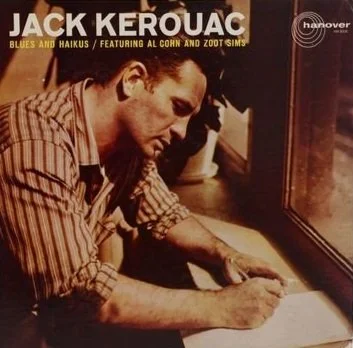
Blues and Haikus
The Good, the Bad, and the Beat
Poet Allen Ginsberg, standard bearer of the post-WWII counter culture.
By Martin Ballard
I can still see the album covers scattered on the sticky veneer dining table: Charlie Parker, Ornette Coleman, Sonny Rollins, lit by a pale shaft of late afternoon sun that punched through the front parlor window.
I spent that whole afternoon with the late poet Allen Ginsberg, who also played me Jack Kerouac’s album, Blues and Haikus. So here was Allen Ginsberg, patiently if bemusedly serving as my sherpa to the realms of creativity, Tibetan Buddhism, and the historic lineage of American counterculture. A a very jumpy 24-year-old journalist, I didn’t need ruby red clod hoppers and a hellhound named Toto on my trail to remind me I wasn’t in Kentucky anymore.
As a journalist, I have met many historically significant people in my lifetime. All well and good, but mostly the article consisted of adding your fown brush strokes to a press kit. This became increasingly true as time wore on.
But back in 1984 (ahem) things were looser than they are now and people less guarded. I actually got to hang out with Ginsberg, who was campaigning hard to solidify the legacy of the literary movement of which he was a founding member. Bruce Cook may have been the first to point out that the Beats were defined not by forward-pushing drive but by an almost neurologically-rooted apathy toward the straight lines and round numbers of mid-century American conformity.
Mainstream critics took a dim view of the Beats, deriding them as ungrateful refuseniks who were looking the gift horse of American exceptionalism in the mouth. But the Beat view of the world was nothing if not life-embracing. It wasn’t until I read my friend’s book that I understood the idea of ‘Beat’ as a kind of deeply spiritual surrender and in no way cheerless.
Standing in the shadow of the new post-war America, a nation eager to cash in on its newfound hyper industrialization, and the riptide of corporate regimentation that went along with it. The Beats were done with it before they started. They were children of a spiritually exhausted mid-century America who despite a new era of unprecedented prosperity found that the promises of consumer culture were not only empty but toxic.
ABOVE: It's uncertain who coined the phrase, 'Blues and Haikus,' but it was the title of American novelist and poet Jack Kerouac’s (1922-1969) second album, released in 1959. Blues and Haikus was made with tenor saxophonist, arranger and composer Al Cohn (1925-1988) and tenor/alto/soprano saxophonist John Haley “Zoot” Sims (1925-1985). “Blues and Haikus is a stunning duet between speaker and saxmen, working spontaneously in this peculiar mix of jazz and voice, in which the saxmen do get their solo spots around Kerouac's work. There's much more of a sense on this album of a conscious interaction here between Kerouac and his accompanists.”
—Bruce Eder, AllMusic, 1961


